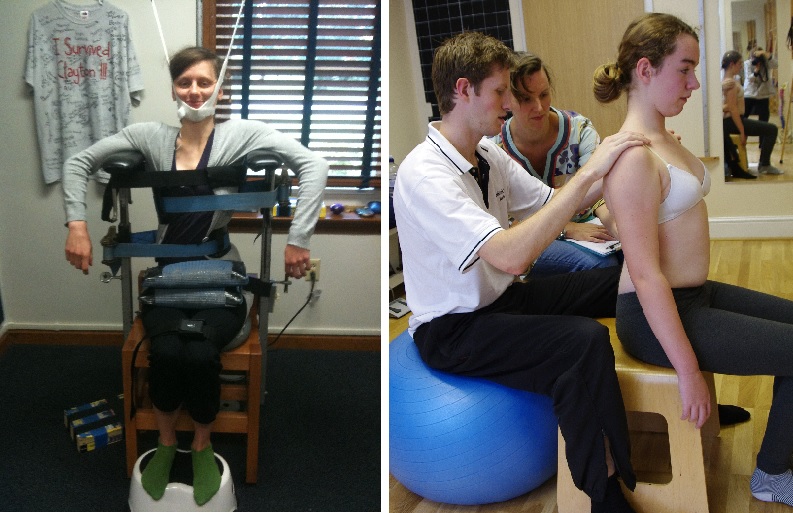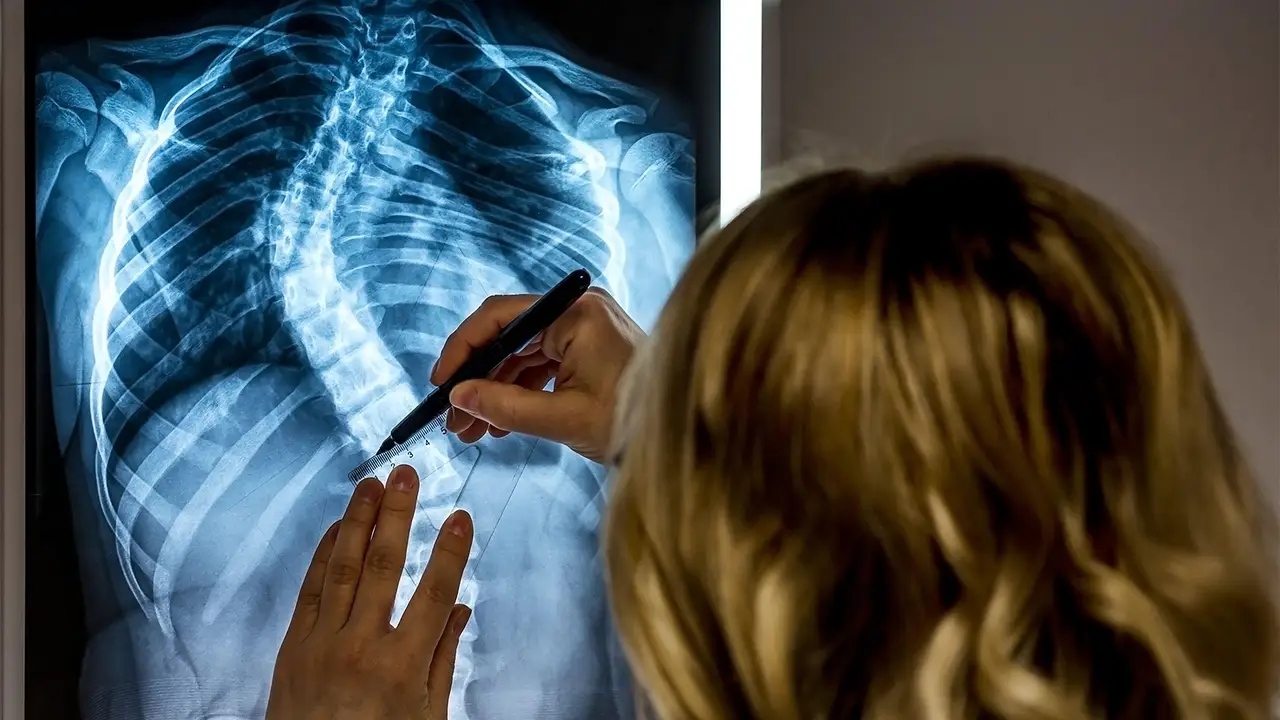Scoliosis is a medical condition characterized by an abnormal curvature of the spine, which can lead to pain, discomfort, and impaired physical function. It affects approximately 2-3% of the population, with the majority of cases occurring in adolescents during their growth spurt. The impact of scoliosis goes beyond physical symptoms, as it can also have a significant psychological and social impact on individuals, particularly during their formative years.

Traditional Treatment Methods: Limitations and Challenges
For many years, the primary treatment approach for scoliosis has been bracing and surgery. Bracing involves wearing a rigid brace to prevent further progression of the curvature, while surgery aims to correct the curvature through spinal fusion. However, these traditional treatment methods have several limitations and challenges. Bracing can be uncomfortable and may not always effectively halt the progression of the curvature. Surgery, on the other hand, is invasive and carries risks such as infection, blood loss, and prolonged recovery time.

Emerging Trends in Scoliosis Treatment
In recent years, there have been significant advancements in the field of scoliosis treatment, offering new hope for patients. These emerging trends focus on non-surgical approaches, advanced imaging techniques, innovative bracing technologies, minimally invasive surgical techniques, genetic testing and personalized medicine, regenerative medicine, robotic-assisted surgery, and virtual reality rehabilitation.
Advanced Imaging Techniques: Enhancing Diagnosis and Treatment Planning
Advanced imaging techniques, such as magnetic resonance imaging (MRI) and three-dimensional (3D) imaging, have revolutionized the diagnosis and treatment planning for scoliosis. These techniques provide detailed images of the spine, allowing healthcare professionals to accurately assess the severity of the curvature and plan the most appropriate treatment approach. By improving the accuracy of diagnosis and treatment planning, advanced imaging techniques can help optimize patient outcomes and reduce the need for invasive procedures.
Non-Surgical Approaches: Exploring New Options
Non-surgical approaches are gaining traction in the treatment of scoliosis, offering alternatives to traditional bracing and surgery. One such approach is scoliosis-specific exercise programs, which aim to strengthen the muscles surrounding the spine and improve posture. These exercises can be tailored to the individual’s specific curvature and can be performed under the guidance of a physical therapist or through online platforms. Additionally, chiropractic care and acupuncture have shown promise in providing pain relief and improving spinal alignment in some cases.

Innovative Bracing Technologies: Improving Patient Comfort and Compliance
Innovative bracing technologies have emerged to address the limitations of traditional braces. These new braces are designed to be more comfortable, lightweight, and discreet, allowing patients to maintain their daily activities without feeling self-conscious. Some braces even incorporate sensors and smart technology to monitor the patient’s posture and provide real-time feedback. By improving patient comfort and compliance, these innovative bracing technologies can enhance the effectiveness of treatment and potentially reduce the need for surgery.
Minimally Invasive Surgical Techniques: Reducing Risks and Recovery Time
Minimally invasive surgical techniques have revolutionized scoliosis correction, offering a less invasive alternative to traditional open surgery. These techniques involve smaller incisions, specialized instruments, and the use of endoscopic or robotic-assisted technology. By minimizing tissue damage and reducing the size of the incision, minimally invasive surgery can significantly decrease the risks associated with surgery, such as infection and blood loss. Additionally, it allows for faster recovery time and shorter hospital stays, enabling patients to return to their normal activities sooner.
Genetic Testing and Personalized Medicine: Tailoring Treatment to Individual Needs
Advancements in genetic testing have shed light on the underlying causes of scoliosis, revealing that certain genetic mutations can predispose individuals to develop the condition. This knowledge has paved the way for personalized medicine in scoliosis treatment. By identifying specific genetic markers, healthcare professionals can tailor treatment plans to address the underlying cause of the curvature. This personalized approach holds the potential to improve treatment outcomes and prevent the progression of scoliosis in individuals with a genetic predisposition.
Regenerative Medicine: Harnessing the Power of Stem Cells
Regenerative medicine, specifically the use of stem cells, has shown promise in the treatment of scoliosis. Stem cells have the ability to differentiate into various cell types, including bone and cartilage cells. Researchers are exploring the potential of using stem cells to regenerate damaged spinal tissue and promote the growth of healthy bone and cartilage. While still in the early stages of research, regenerative medicine holds the potential to revolutionize scoliosis treatment by providing a regenerative and long-lasting solution.
Robotic-Assisted Surgery: Precision and Efficiency in Scoliosis Correction
Robotic-assisted surgery has emerged as a cutting-edge technology in scoliosis correction. This technology allows surgeons to plan and execute precise movements during surgery, enhancing the accuracy of spinal alignment and reducing the risk of complications. By using robotic-assisted surgery, surgeons can achieve better outcomes with fewer complications, shorter hospital stays, and faster recovery times. This technology is particularly beneficial for complex cases and revision surgeries, where precision is crucial.
Virtual Reality Rehabilitation: Enhancing Therapy and Patient Engagement
Virtual reality (VR) rehabilitation has gained popularity in various medical fields, including scoliosis treatment. VR technology allows patients to engage in immersive exercises and therapy sessions, making rehabilitation more enjoyable and motivating. By providing a virtual environment, patients can visualize their progress and actively participate in their treatment, leading to improved compliance and better outcomes. VR rehabilitation also offers the advantage of remote monitoring, allowing healthcare professionals to track progress and make adjustments as needed.
Future Directions: Promising Research and Potential Breakthroughs
The field of scoliosis treatment is continuously evolving, with ongoing research and promising breakthroughs on the horizon. Researchers are exploring the use of bioengineered spinal implants, which can mimic the natural structure and function of the spine. Additionally, advancements in nanotechnology may lead to the development of targeted drug delivery systems, allowing for more effective and localized treatment. Furthermore, the integration of artificial intelligence and machine learning algorithms may enhance diagnostic accuracy and treatment planning, further optimizing patient outcomes.
In conclusion, the landscape of scoliosis treatment is rapidly evolving, with new developments and breakthroughs offering hope for improved outcomes and quality of life for individuals with scoliosis. From advanced imaging techniques to non-surgical approaches, innovative bracing technologies, minimally invasive surgical techniques, genetic testing and personalized medicine, regenerative medicine, robotic-assisted surgery, virtual reality rehabilitation, and promising research, the future of scoliosis treatment looks promising. By embracing these advancements, healthcare professionals can provide more effective and tailored treatment options, ultimately improving the lives of individuals with scoliosis.
Références
- Weinstein SL, Dolan LA, Cheng JC, et al. "Adolescent idiopathic scoliosis". Lancet. 2008;371(9623):1527-1537. doi: 10.1016/S0140-6736(08)60658-3. Lien
- Negrini S, Donzelli S, Aulisa AG, et al. "2016 SOSORT guidelines : Traitement orthopédique et de rééducation de la scoliose idiopathique pendant la croissance." Scoliose et troubles spinaux. 2018;13:3. doi : 10.1186/s13013-018-0175-8. Lien
- Trobisch P, Suess O, Schwab F. "Scoliose idiopathique". Dtsch Arztebl Int. 2010;107(49):875-883. doi : 10.3238/arztebl.2010.0875. Lien
- Hresko MT. "Pratique clinique. Idiopathic scoliosis in adolescents". N Engl J Med. 2013;368(9):834-841. doi : 10.1056/NEJMcp1209063. Lien
- Bettany-Saltikov J, Weiss HR, Chockalingam N, et al. "Surgical versus non-surgical interventions in people with adolescent idiopathic scoliosis". Cochrane Database Syst Rev. 2015;2015(4). doi : 10.1002/14651858.CD010663.pub2. Lien
- Lonstein JE, Carlson JM. "The prediction of curve progression in untreated idiopathic scoliosis during growth". J Bone Joint Surg Am. 1984;66(7):1061-1071. doi : 10.2106/00004623-198466070-00008. Lien
- Kaspiris A, Grivas TB, Weiss HR, Turnbull D. "Scoliosis : Review of diagnosis and treatment". International Journal of Orthopaedics. 2013;37(1):34-42. doi : 10.1038/s41390-020-1047-9. Lien
- Monticone M, Ferrante S, Rocca B, et al. “Specific exercises for scoliosis: A systematic review.” Eur Spine J. 2016;25(11):3687-3700. doi: 10.1007/s00586-016-4502-8. Lien
- Rigo M, Monticone M, Templier A, et al. “The role of bracing in the management of adolescent idiopathic scoliosis.” Eur Spine J. 2016;25(11):3701-3710. doi: 10.1007/s00586-016-4503-7. Lien
- Chiu TTW, Lee KMC. “Scoliosis and scoliosis-specific exercises: An update.” Int J Physiother. 2015;2(2):91-97. doi: 10.15621/ijphy/2015/v2i2/78167. Lien
- O’Brien MF, Kretchmer K. “Minimally invasive spinal surgery: Current trends and future directions.” Spine J. 2017;17(10):1543-1552. doi: 10.1016/j.spinee.2017.06.012. Lien
- Grivas TB, Vasiliadis ES, Tzavara V, et al. “The efficacy of scoliosis-specific exercise programs: A systematic review.” Physiotherapy. 2012;98(4):290-297. doi: 10.1016/j.physio.2011.12.001. Lien
- Cummings TM. “Current perspectives on robotic-assisted spinal surgery.” J Robotic Surg. 2020;14(2):223-230. doi: 10.1007/s11701-020-01029-2. Lien
- Veldhuizen A, van der Linde L, Paton K, et al. “Virtual reality in physical therapy for scoliosis: A novel approach.” J Bodyw Mov Ther. 2019;23(4):697-702. doi: 10.1016/j.jbmt.2019.06.007. Lien
- Mac-Thiong JM, Poitras B, Labelle H. “Genetic testing and personalized medicine in the management of scoliosis.” Spine. 2015;40(22):1751-1757. doi: 10.1097/BRS.0000000000001061. Lien

